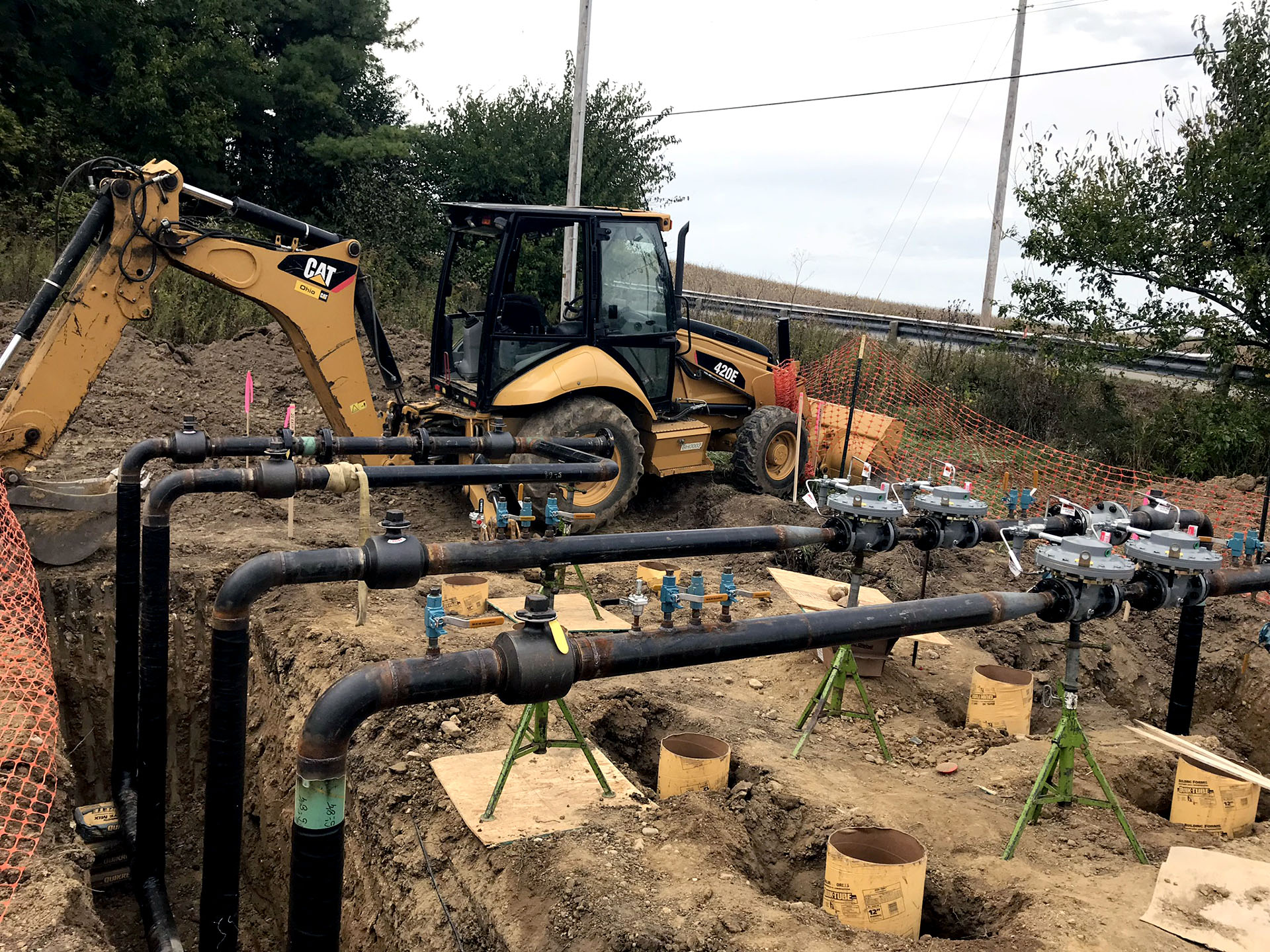How We Do It
Process Outline
- Step 1 100%
Distance to the nearest point of delivery is determined, and a goal for participation is formulated
- Step 2 100%
Legacy secures a right-of-way easement
- Step 3 100%
Legacy canvasses the area for parties interested in signing up for natural gas service to meet the participation goal
- Step 4 100%
Engineering, design and permitting occurs
- Step 5 100%
Construction beings
- Step 6 100%
A Co-Op is created, a Board of Directors is elected and takes over management of the system
Frequently Asked Questions
What will it Cost to Get Gas Service?
Usually the cost to install service is minimal. Legacy will work with planners, permitting agencies and others to minimize the cost, at our expense. The only cost to the member is the installation of the service line. Legacy pays for construction and continues to bear that cost, being repaid via a delivery fee assessed to the Co-Op.
What are the Advantages to Switching to Natural Gas?
Consistent, uninterrupted service. Unlike other options, Natural Gas will always be there, without having to have a tank refilled, or other services. Also, being a part of a natural gas system, as opposed to relying on a one-building solution, raises the value and resale attractiveness of a property.
And Natural Gas is the most cost-effective solution, typically costing 25-50% less than other energy sources.
And Natural Gas is the most cost-effective solution, typically costing 25-50% less than other energy sources.
How safe is Natural Gas?
A modern, well-installed natural gas system is extremely safe. Natural Gas is lighter than air, and has a distinct odor. This means a leak is easily detected by smell and can be quickly dissipated, reducing the risk of ignition. Lastly, today’s galvanized pipes have longer life, are easier to repair and are more easily monitored with sensors, sniffers and regular maintenance.
How Long Will Installing Service take, and what are the Steps to Do It?
The total timeline to complete an installation can vary, but generally follows the steps in our process outline section.
Who Can Be a Customer?
In general, the size and number of people receiving service is proportional to your distance to a natural gas transmission line, so any of the following could be clients:
- Municipalities
- Warehouses
- Grain dryers/medium to large agricultural operations
- Manufacturers
- And more. Please contact us, so we can help you determine if you may be eligible.
Request a Consultation

